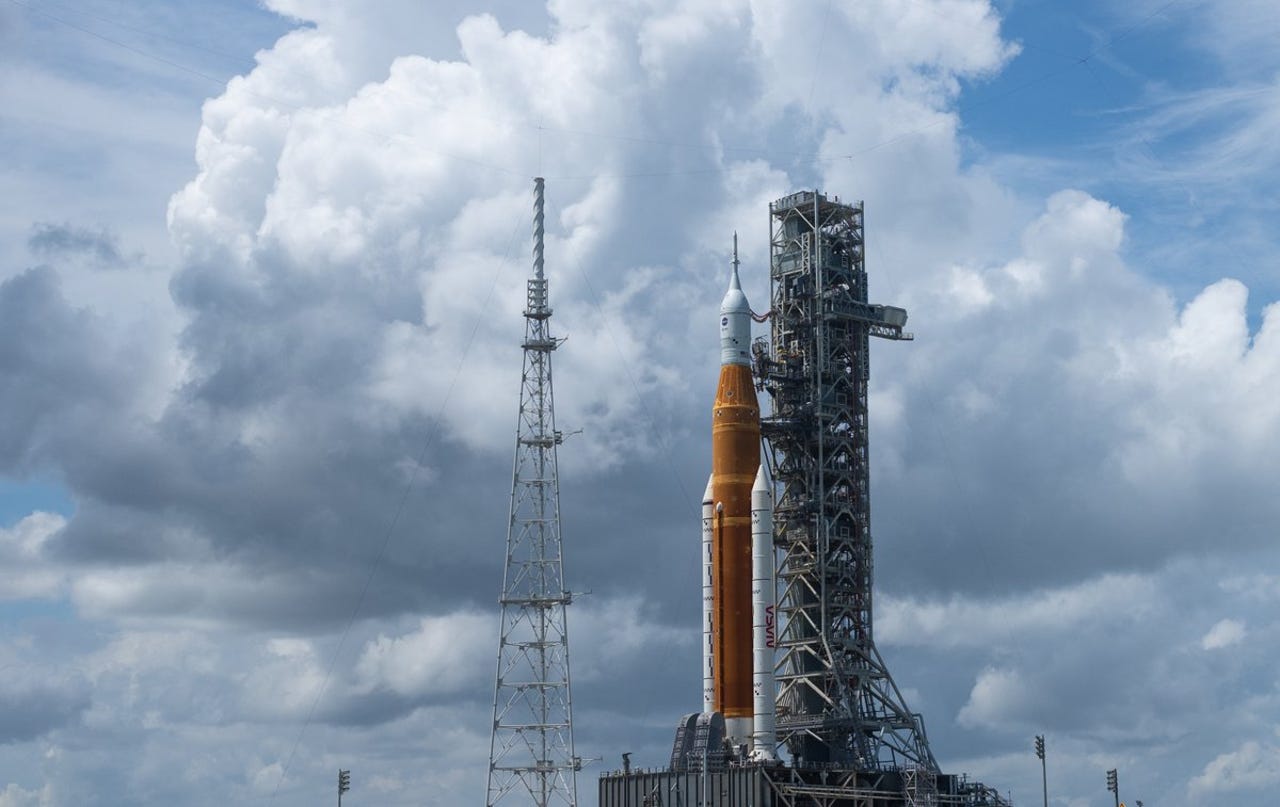Artemis launch: NASA sets another date for its Moon mission attempt


NASA has booked a date for yet another attempt at launching the Artemis I mission, following Hurricane Ian lashing Florida last month and forcing the space agency to roll the giant rocket back to shelter.
NASA has as 69-minute launch window from 12:07am EST on November 14 to launch the the 322.4 feet-tall (98.3 metres) Space Launch System (SLS) rocket and propel the un-crewed Orion spacecraft around the Moon and back to Earth.
Space
The US space agency plans to wheel the rocket back to the launch pad at Kennedy Space Center in Florida on Friday November 4. It said inspections over the past week confirmed "minimal work" is needed to prepare the rocket and spacecraft for its return to the launch pad. Kennedy area received minimal impacts from Hurricane Ian, according to NASA.
Also: What is Artemis? Everything you need to know about NASA's new moon mission
"Teams will perform standard maintenance to repair minor damage to the foam and cork on the thermal protection system and recharge or replace batteries on the rocket, several secondary payloads, and the flight termination system," NASA said.
Assuming liftoff happens on November 14, Orion's Moon mission would last 25-and-a-half days and end with a splashdown in the Pacific Ocean on Friday, December 9. Orion will travel 280,000 miles (450,616 km) from Earth on this mission.
Artemis II, the first crewed mission, is planned for around 2024 or 2025 on the same configuration rockets used in the Artemis I mission.
Besides Orion, Artemis I's other payloads include 10 small CubeSats for research focusing on the Moon, the sun, a near-Earth asteroid, and Earth. NASA has been re-charging the CubeSats.
Also, inside Orion, NASA has been replenishing "biological passengers" that are going near the Moon to study DNA damage and protection from radiation exposure. Radiation there is about twice what it is on the International Space Station, which orbits Earth at about 253 miles (408 km).
NASA wheeled SLS back to its hangar in late September as Hurricane Ian approached the western side of Florida's peninsula, disrupting what would have been its third attempt. It hoped to keep SLS on the launch pad to preserve an October launch date.
The two previous attempts were called off due to technical issues. The first scrubbed launch on August 29 happened after SLS systems failed to cool all four RS-25 engines to minus 420 degrees Fahrenheit (-250C), which is necessary to protect the core stage during its eight-minute journey to low-Earth orbit, where Orion is propelled towards the Moon. The second attempt on September 3 was called off due to a hydrogen leak in an interface between the liquid hydrogen fuel feed line and the SLS rocket.
NASA can't pick just any day to launch SLS and Orion as it needs to meet four key criteria, including the Moon's position and a splashdown that happens in daylight for easier retrieval. Also, NASA needs to coordinate with US Space Force, which oversees the Eastern Range and allocates launch times for various space missions.
NASA has requested back-up launch dates for Wednesday, November 16, at 1:04 am, and Saturday, November 19, at 1:45 am. Both offer two-hour launch windows.